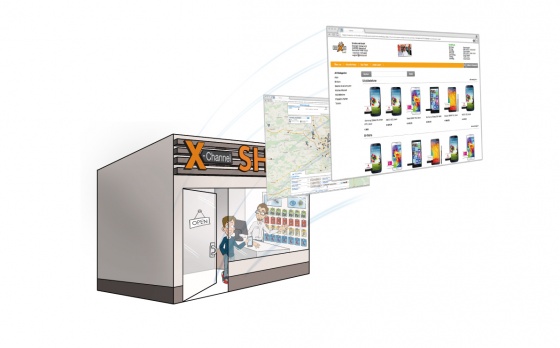Languages
Contact
CONTACT - 0049 9133 7770-800

Dominik Brokelmann, CEO Brodos AG and author of “Der vernetzte Laden” (“The Connected Store”)
Cross-channel stands for a complete, seamless and for the customer straightforward combination of retail premises and an online shop, the perfect combination of online and offline channels. This is the optimal alternative, especially for customers. A good example for a cross-channel system which is already working well is offered by banks, that have been following this path successfully for some time now.
CROSS-CHANNEL WELL ESTABLISHED IN BANKING SECTOR
In chapter 6 of my book “The Connected Store”, I describe the way to a cross-channel business as demonstrated by banks, which run a regional network of brick and mortar bank branches, whilst at the same time offering online banking. Customers can use a bank’s online banking service either by using a special programme via their browser on the PC, or by using their mobile phone. Banks are therefore a very good reference example for how entire branches and their market participants can cope with the requirements of the internet.

Online banking quite simply from home.
Who would have thought that this would be so easy to arrange so smoothly and at the end of the day so simply for both customers and bank employees? Banks started out on the new venture with some trepidation. The foundations of the entire industry seemed to be shaking, mass redundancies and branch closures were forecast. The industry faced up to the challenge, however, with for example the Deutsche Bank “Bank 24” being set up as a purely online bank.
TRANSFORMATION TO CROSS-CHANNEL EASIER FOR BANKS THAN FOR BRICK AND MORTAR RETAILERS
Unlike brick and mortar retailers, banks had the advantage that they are significantly less reliant on other market participants than brick and mortar retailers. This is predominantly down to the products: Unlike physical products, these do not have to be produced by external manufacturers and the logistics processes are not so complex either. Goods are not kept in stock like is the case with brick and mortar retailers. A bank’s headquarters and its branches are much easier for the bank’s management to control than the delivery chain of physical products. Here there is less mutual dependence than is the case with brick and mortar retailers.
For me, this is the reason why we in the retail branch are not yet as far as the banks. I, however, am convinced that it is only a matter of time until we as consumers can enjoy links between the various channels in the retail business in much the same way as we do with banks at present.

Cross-channel as demonstrated by the connected store (source: book “the connected store”).
Anyone who is interested in the topic of cross-channel can find out more about it in my book “The Connected Store”. In my book, I give a clear and straightforward description of the cross-channel concept and our related concept of the connected store, explaining how brick and mortar retailers can use this to their advantage. Further information about the connected store can also be found on our website www.dervernetzteladen.de (currently only available in German).































